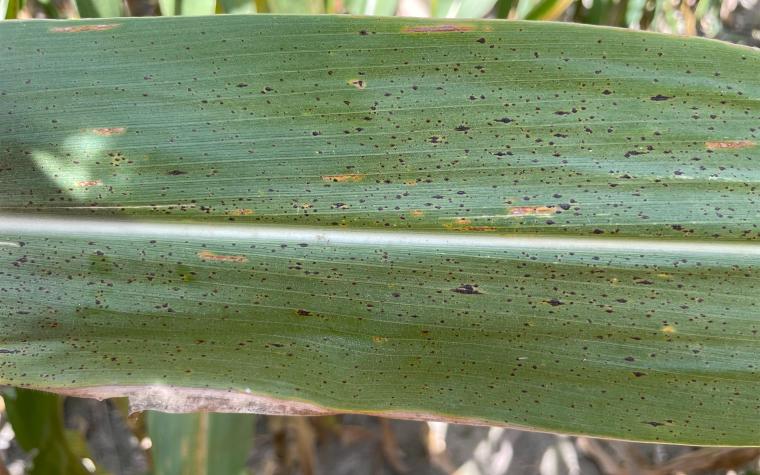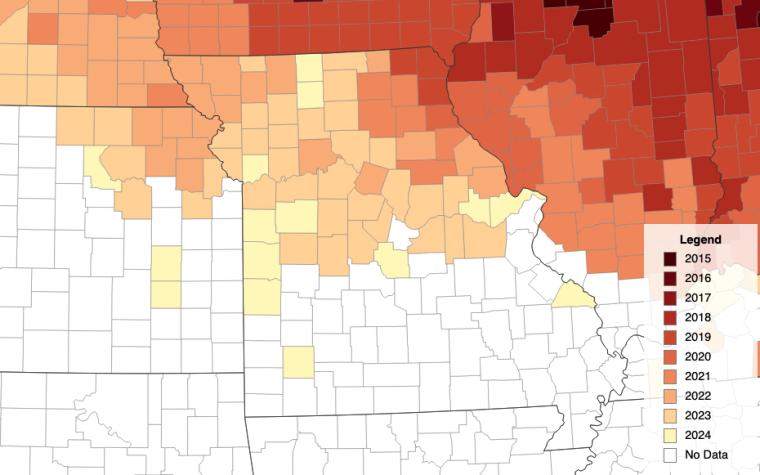COLUMBIA, Mo. – Good scouting is the best way to identify tar spot in corn, says University of Missouri Extension state plant pathologist Mandy Bish.
Tar spot was confirmed in June of 2023 and 2024 in Missouri, which is earlier than in previous years, when the disease showed up in August or September. This earlier appearance is likely to continue because Missouri’s spring air temperatures are favorable for the disease, says Bish. However, the disease typically slows significantly in July as air temperatures rise.
Tar spot gains ground in Missouri cornfields
The yield-robbing disease gained ground in Missouri cornfields in recent years and likely will continue to spread in 2025, says Bish. The pest monitoring and forecasting website ipmPIPE shows where the disease has taken hold in Missouri, mostly in the northern half of the state.
Tar spot may be misidentified because the spots can mimic other diseases and insect frass. However, the spots cannot be scraped off from the corn leaf with a fingernail and will be found on the top and bottom of the leaf.
Some corn hybrids are less susceptible to tar spot than others, but there is no highly resistant hybrid, so fungicide application at the right time is the best control option, Bish says.
Fungicide timing critical to control
Research across corn-growing states shows that the most effective window for application is typically between the VT and R3 growth stages. Findings suggest a single, well-timed fungicide application offers a better chance for positive return on investment than a two-pass approach.
Don’t apply too early, says Bish. According to the Crop Protection Network, most fungicides only effectively manage disease for about 14 to 21 days after application. Applications earlier than VT and after R4 have not demonstrated a good return on investment, she says.
Tool helps forecast risks
The Crop Protection Network, a partnership of land-grant universities, recently published an online tool to help predict the risks of tar spot and other crop diseases using several variables, including weather. Farmers can enter site-specific information into the website. The network offers many resources on tar spot.
Several factors increase disease risk:
- Tar spot previously found in the field or neighboring fields.
- Field is corn-on-corn rotation.
- Irrigation, which can hasten the onset of symptoms.

